Dry, Cold Forging of Oxygen-Free Copper by Massively Nitrogen-Supersaturated CoCrMo Dies
Abstract
1. Introduction
2. Materials and Methods
2.1. Die and Work Materials
2.2. Plasma Immersion Nitriding for MNS
2.3. Dry, Cold Forging Experiment
2.4. Material and Mechanical Characterization on MNS CoCrMo Substrates
3. Results
3.1. MNSed CoCrMo Substrates
3.2. Hardness of MNS-CoCrMo Substrates
3.3. Dry, Cold Upsetting of Oxygen-Free Copper Wires by MNSed CoCrMo Dies
4. Discussion
5. Conclusions
Author Contributions
Funding
Data Availability Statement
Acknowledgments
Conflicts of Interest
References
- Lei, T.; Wang, D.; Yu, X.; Ma, S.; Zhao, W.; Cui, C.; Meng, J.; Tao, S.; Guan, D. Global iron and steel plant CO2 emissions and carbon-neutrality pathways. Nature 2023, 622, 514–520. [Google Scholar] [CrossRef] [PubMed]
- Hagedorn, W.; Gramlich, A.; Greiff, K.; Krupp, U. Alloy and process design of forging steels for better environmental performance. Sustain. Mater. Technol. 2022, 34, e00509. [Google Scholar] [CrossRef]
- Global Market Insights. Market Size and Share of Oxygen-Copper. Available online: https://www.gminsights.com (accessed on 22 May 2024).
- Cui, Z.P.; Li, G.; Liu, H.Z.; Zong, W.J.; Zhang, H.J.; Zhang, C.Y.; Du, K. Tool anisotropic wear prediction and its influence on surface topography in diamond turning of oxygen-free copper. J. Mater. Process. Technol. 2023, 318, 118042. [Google Scholar] [CrossRef]
- Dohda, K.; Boher, C.; Rezai-Aria, F.; Mahayotsanun, N. Tribology in metal forming at elevated temperatures. Friction 2015, 3, 1–27. [Google Scholar] [CrossRef]
- Dohda, K.; Yamamoto, M.; Hu, C.; Dubar, L.; Ehmann, K.F. Galling phenomena in metal forming. Friction 2021, 9, 665–685. [Google Scholar] [CrossRef]
- Siegmund, M. Hot die forging with nitrided and thermally stabilized DLC coated tools. Mater. Res. Proc. 2023, 28, 583–590. [Google Scholar]
- Dumpala, R.; Chandran, M.; Ramachandra Rao, M.S. Engineered CVD diamond coatings for machining and tribological applications. JOM 2015, 67, 1565–1577. [Google Scholar] [CrossRef]
- Choleridis, A.; Sao-Joao, S.; Ben-Mohamed, J.; Chern, D.; Barnier, V.; Kermouche, G.; Heau, C.; Leroy, M.-A.; Julien Fontaine, J.; Sylvie Descartes, S.; et al. Experimental study of wear-induced delamination for DLC coated automotive components. Surf. Coat. Technol. 2018, 352, 549–560. [Google Scholar] [CrossRef]
- Zhao, G.; Li, Z.; Hu, M.; Li, L.; He, N.; Jamil, M. Fabrication and performance of CVD diamond cutting tool in micro milling of oxygen-free copper. Diam. Relat. Mater. 2019, 100, 107589. [Google Scholar] [CrossRef]
- Moskalioviene, T.; Galdikas, A.; Rivière, J.P.; Pichon, L. Modeling of nitrogen penetration in polycrystalline AISI 316L austenitic stainless steel during plasma nitriding. Surf. Coat. Technol. 2011, 205, 3301–3306. [Google Scholar] [CrossRef]
- Aizawa, T. Micro-/meso-structure control of multi-hostmetal alloys by massive nitrogen supersaturation. J. Mater. 2024, 17, 1294. [Google Scholar] [CrossRef] [PubMed]
- Aizawa, T.; Funazuka, T.; Shiratori, T.; Suzuki, Y. Massive nitrogen supersaturation to CoCrMo alloys for surface microstructure control. Acad. Mater. Sci. 2023, 1, 1–9. [Google Scholar] [CrossRef]
- Aizawa, T.; Fukuda, T.; Shiratori, T.; Suzuki, Y. Massive nitrogen supersaturation into CoCrMo alloys for improvement of tribological performance. In Proceedings of the 26th ESAFORM, Toulouse, France, 25 April 2024; Materials Research Proceedings. Volume 41, pp. 1248–1258. [Google Scholar]
- Aizawa, T.; Rsadi, I.; Yunata, E.E. High density RF-DC plasma nitriding under optimized conditions by plasma diagnosis. Appl. Sci. 2022, 12, 3706. [Google Scholar] [CrossRef]
- He, K.; Chen, N.; Wang, C.; Wei, L.; Chen, J. Method for determining crystal grain size by X-ray diffraction. Cryst. Res. Technol. 2018, 53, 1700157. [Google Scholar] [CrossRef]
- Fernanda Gazulla, F.; Rodrigo, M.; Blasco, E.; Orduña, M. Nitrogen determination by SEM-EDS and elemental analysis. X-ray Spectrosc. 2013, 42, 394–401. [Google Scholar] [CrossRef]
- Li, Y.; Li, W.; Min, N.; Liu, H.; Jin, X. Homogeneous elasto-plastic deformation and improved strain compatibility between austenite and ferrite in a co-precipitation hardened medium Mn steel with enhanced hydrogen embrittlement resistance. Int. J. Plast. 2020, 133, 102805. [Google Scholar] [CrossRef]
- Frueh, P.; Heine, A.; Weber, K.E.; Wickert, M. Effective depth-of-penetration range due to hardness variation for different lots of nominally identical target material. Def. Technol. 2016, 12, 171–176. [Google Scholar] [CrossRef]
- Mikado, H.; Lindgren, J.H.; Wiklund, U.; Jacobson, S.; Kawamura, S. Wear of cemented carbide tools in a copper alloy forging process—Verification of a new lab test. Wear 2023, 528–529, 204978. [Google Scholar] [CrossRef]
- Artizono. Copper Alloy Forging: A Comprehensive Guide. Available online: https://artizono.com/copper-alloy-forging-guide/ (accessed on 24 May 2024).
- Hong, J.-J.; Yeh, W.-C. Application of response surface methodology to establish friction model of upset forging. Adv. Mech. Eng. 2018, 10, 1687814018766744. [Google Scholar] [CrossRef]
- Franchi, R.; Prete, A.D.; Umbrello, D. Inverse analysis procedure to determine flow stress and friction data for finite element modeling of machining. Int. J. Mater. Form. 2017, 10, 685–695. [Google Scholar] [CrossRef]
- Domain, C.; Becqart, C.S.; Foct, J. Ab initio study of foreign interstitial atom (C, N) interactions with intrinsic point defects in α-Fe. Phys. Rev. B 2004, 69, 144122. [Google Scholar] [CrossRef]
- Kitano, H.; Dohda, K.; Kalin, M.; Ehmann, K.F. Galling growth analysis in metal forming. Manuf. Lett. 2018, 16, 32–35. [Google Scholar] [CrossRef]
- Borgioli, F.; Galvanetto, E.; Bacco, T. Low temperature nitriding of AISI300 and 200 series austenitic stainless steels. Vacuum 2016, 12, 51–60. [Google Scholar] [CrossRef]
- Dong, H. S-phase surface engineering of Fe-Cr, Co-Cr and Ni-Cr alloys. Int. Mater. Rev. 2022, 55, 65–98. [Google Scholar] [CrossRef]
- Bandyopaghyay, A.; Traxel, K.D.; Avila, J.D.; Mitra, I.; Bose, S. CoCr alloys. In Biomaterials Science, 4th ed.; Academic Press: Cambridge, MA, USA, 2020; pp. 257–269. [Google Scholar]
- Lee, S.; Nomura, N.; Chiba, A. Significant improvement in mechanical properties of biomedical Co-Cr-Mo alloys with combination of N addition and Cr-enrichment. Mater. Trans. 2008, 2, 260–264. [Google Scholar] [CrossRef]
- Funazuka, T.; Horiuchi, S.; Dohda, K.; Shiratori, T. Effect of CoCrMo die with nanotexture applied on micro-extrudability of micro backward extrusion of AA6063. In Proceedings of the WCMNM2023, Evanston, IL, USA, 19 September 2023; pp. 1–4. [Google Scholar]
- Shukla, K.; Sugumaran, A.A.; Khan, I.; Ehiasarian, A.P.; Hovsepian, P.E. Low pressure plasma nitrided CoCrMo alloy utilizing HIPIMS discharge for biomedical applications. J. Mech. Behav. Biomed. Mater. 2020, 111, 104110. [Google Scholar] [CrossRef]

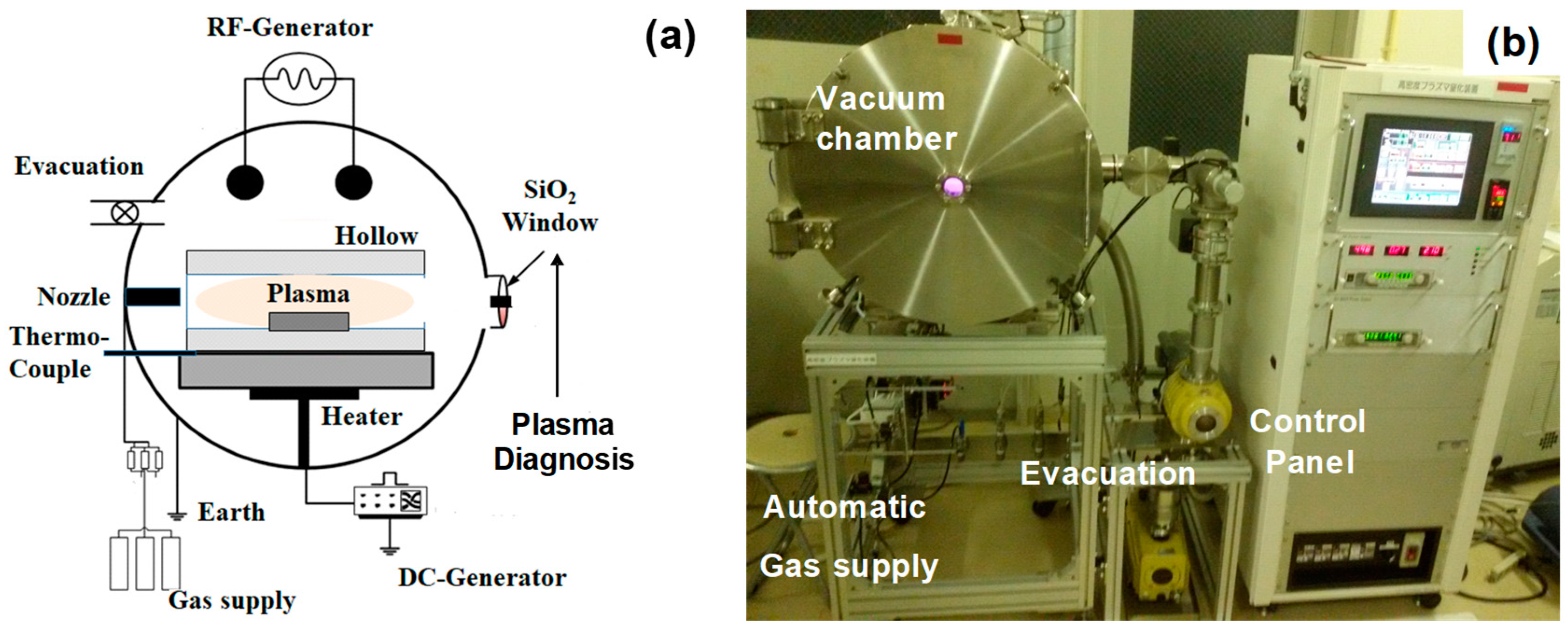

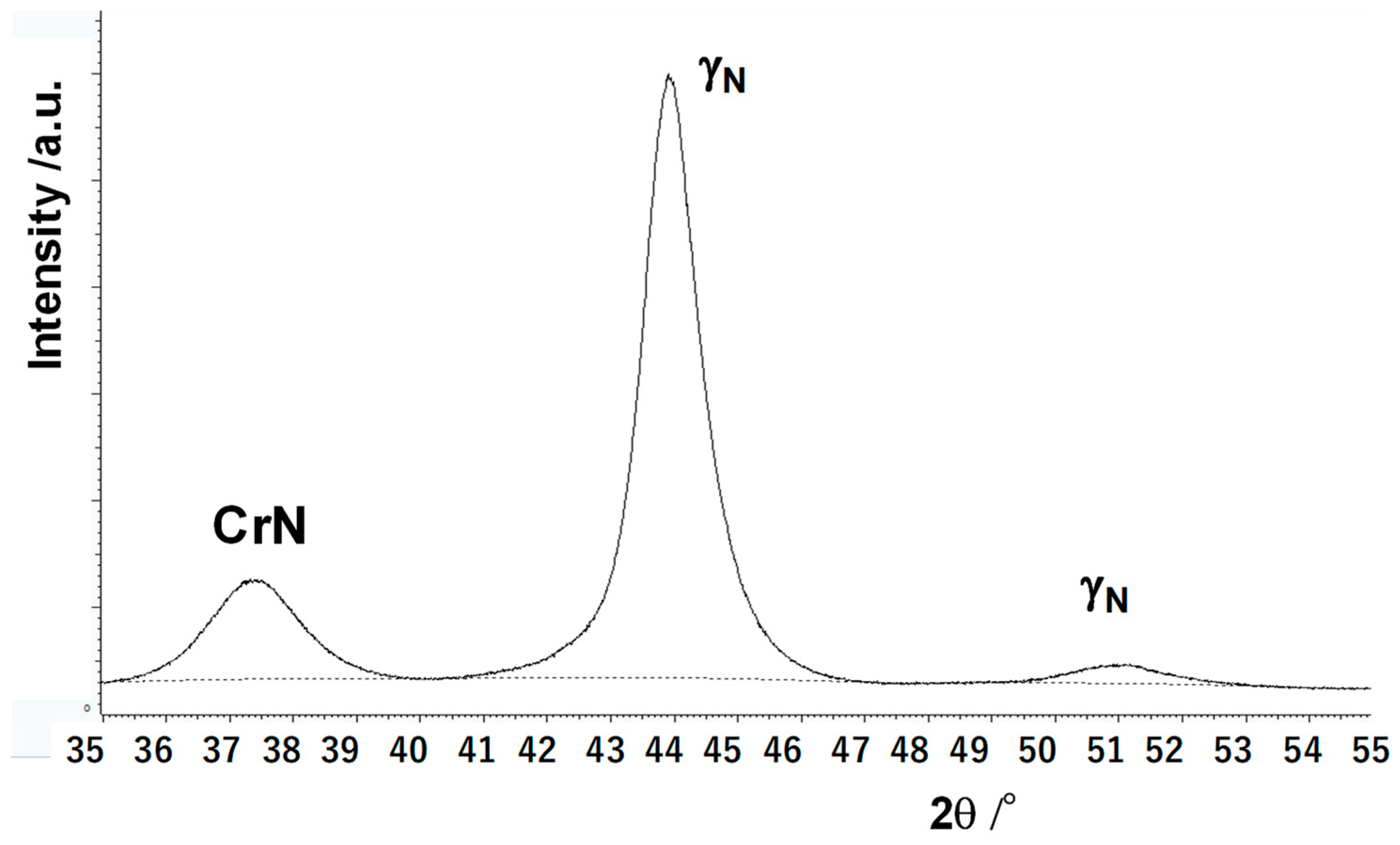

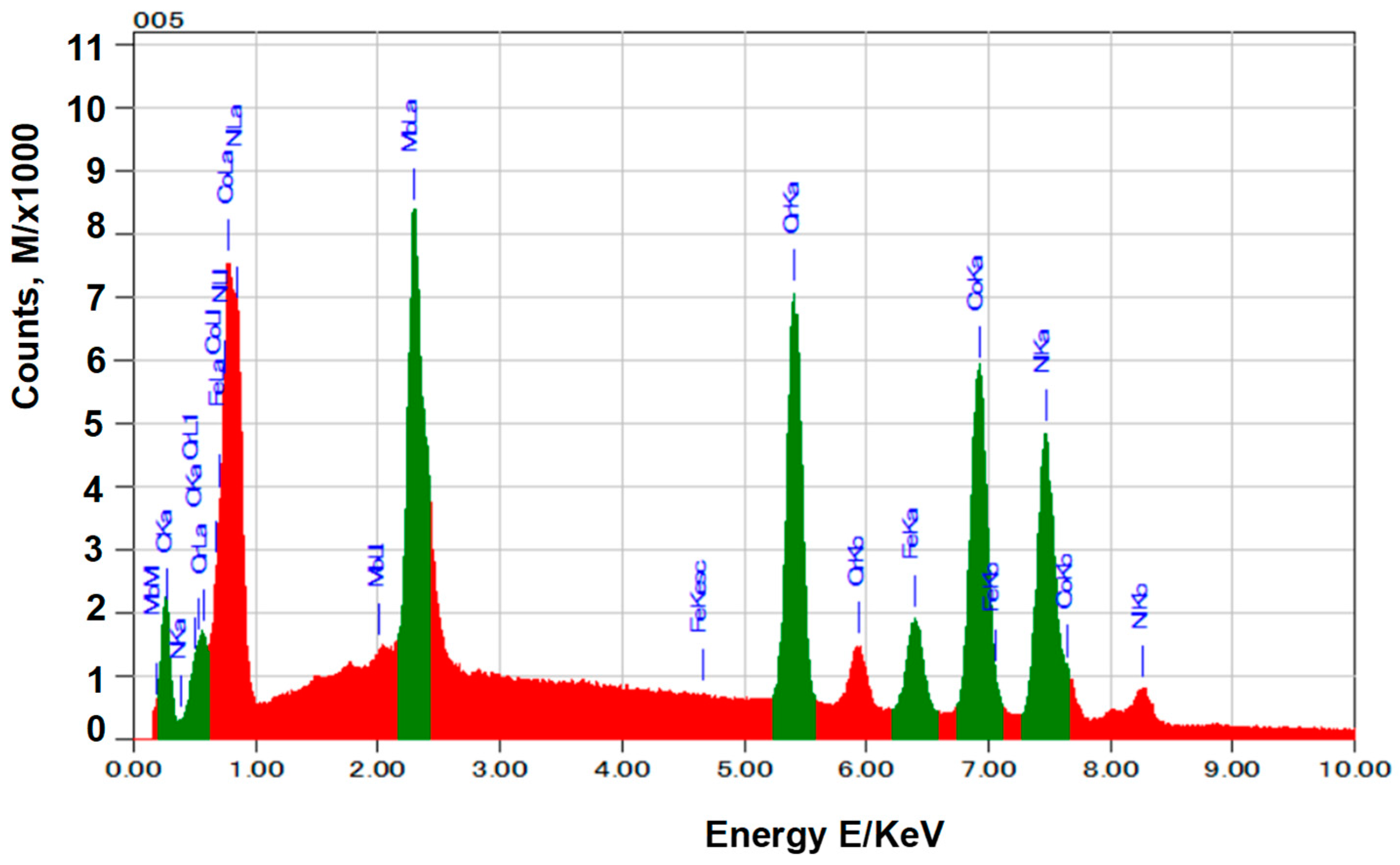


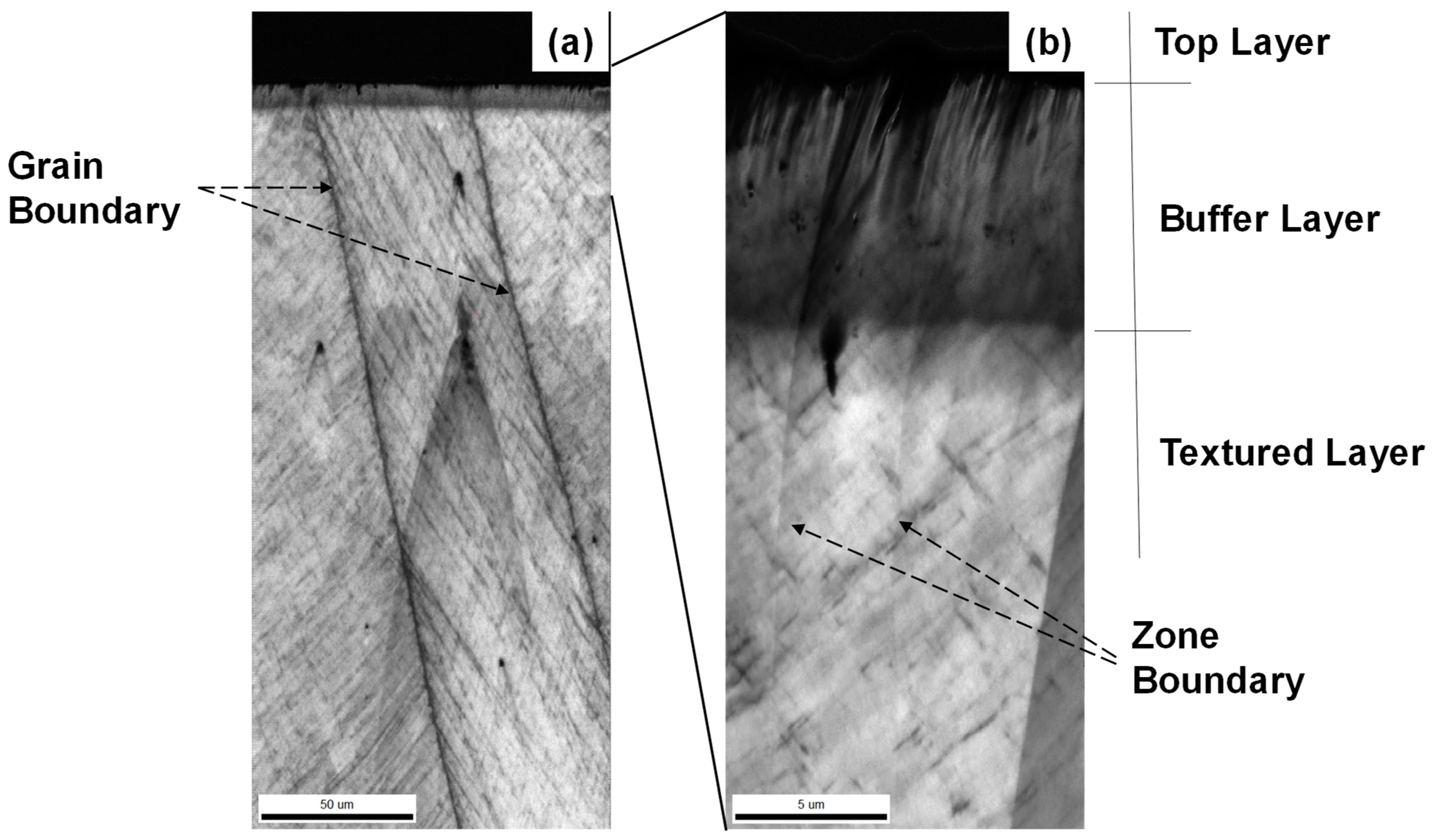
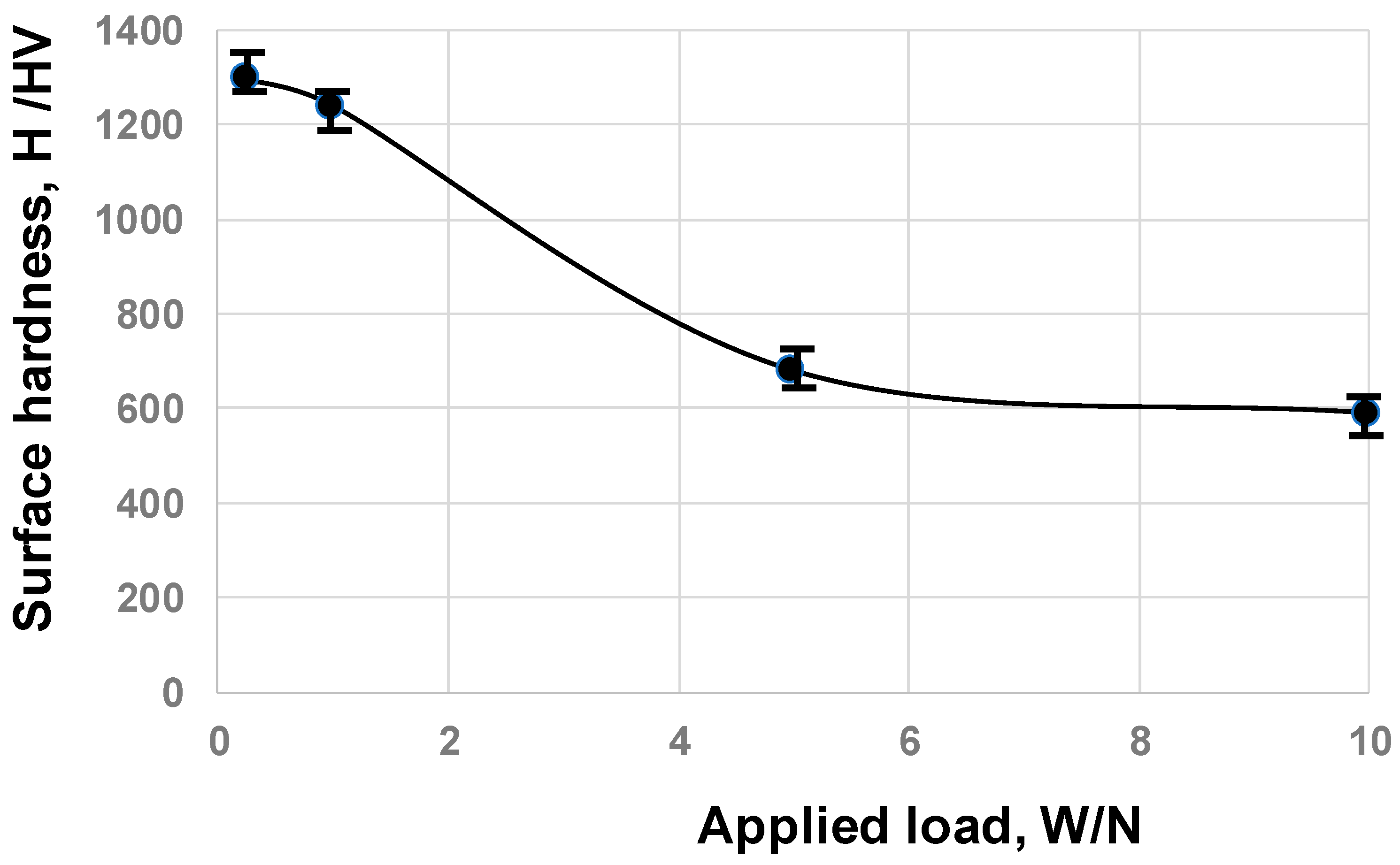
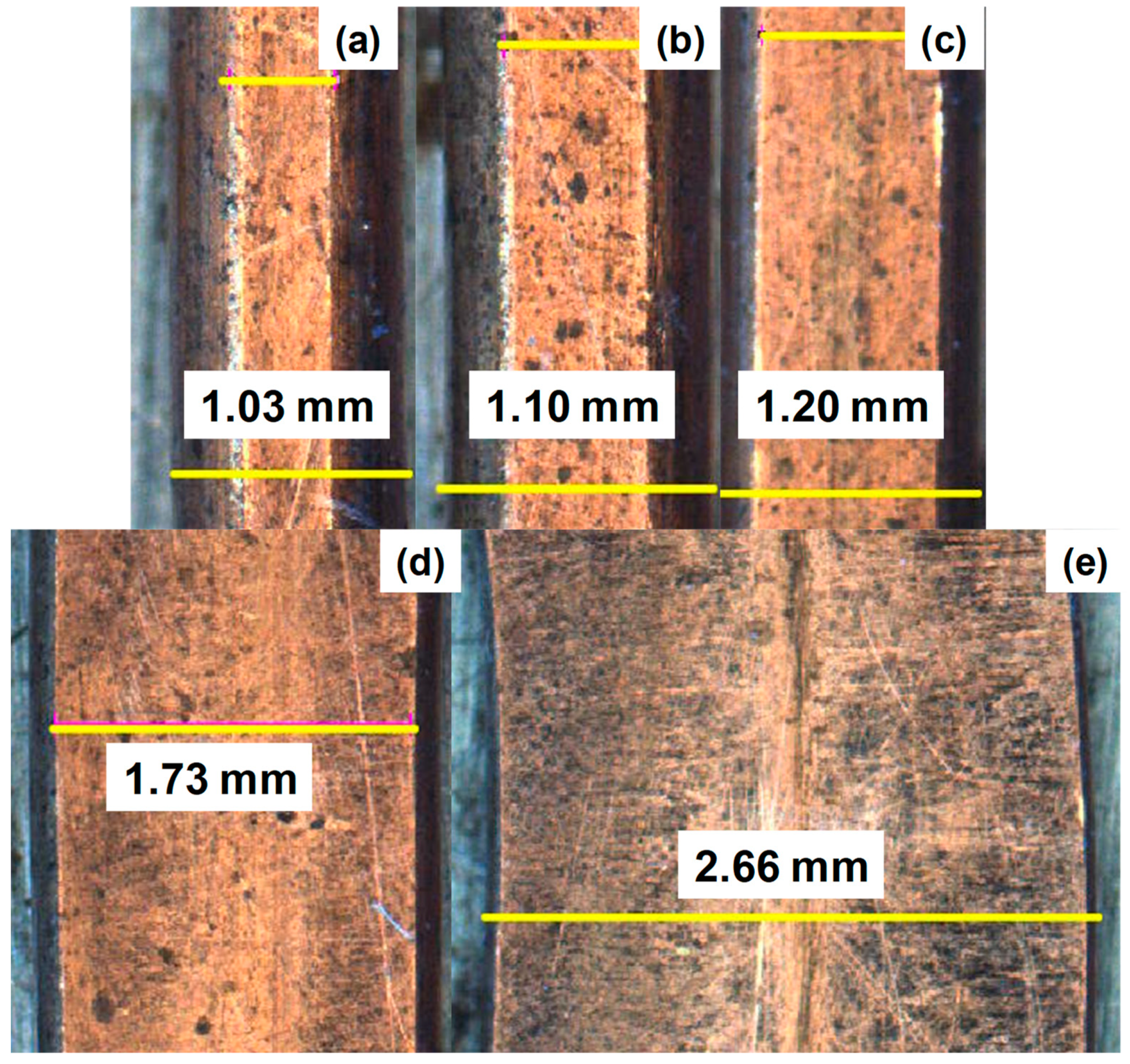

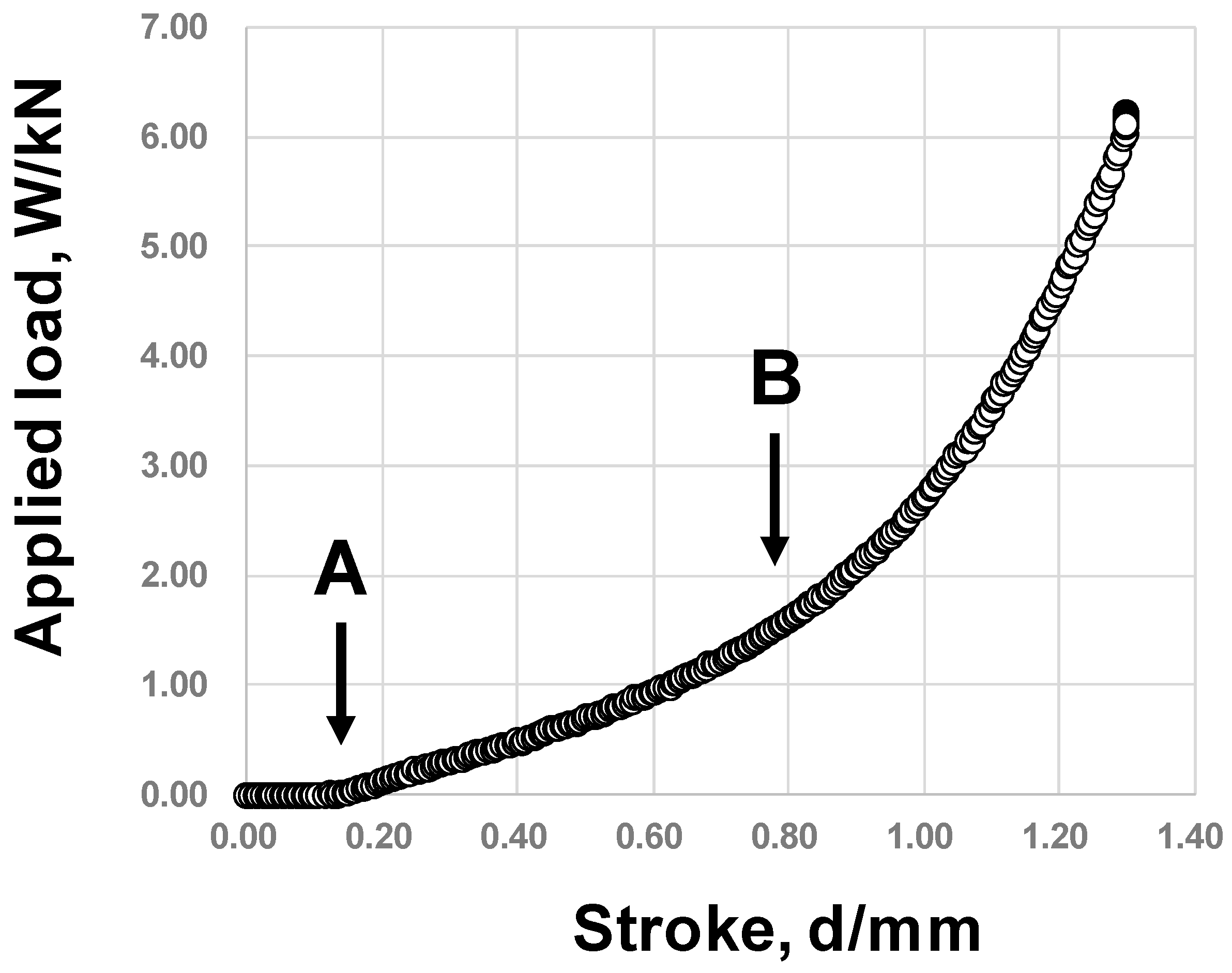
| Element | Cr | Mo | Si | Mn | Fe | Ni | N | C | Co |
|---|---|---|---|---|---|---|---|---|---|
| Content | 27.14 | 5.99 | 0.59 | 0.61 | 0.06 | <0.01 | 0.11 | 0.052 | Balance |
Disclaimer/Publisher’s Note: The statements, opinions and data contained in all publications are solely those of the individual author(s) and contributor(s) and not of MDPI and/or the editor(s). MDPI and/or the editor(s) disclaim responsibility for any injury to people or property resulting from any ideas, methods, instructions or products referred to in the content. |
© 2024 by the authors. Licensee MDPI, Basel, Switzerland. This article is an open access article distributed under the terms and conditions of the Creative Commons Attribution (CC BY) license (https://creativecommons.org/licenses/by/4.0/).
Share and Cite
Aizawa, T.; Funazuka, T.; Shiratori, T. Dry, Cold Forging of Oxygen-Free Copper by Massively Nitrogen-Supersaturated CoCrMo Dies. Metals 2024, 14, 755. https://doi.org/10.3390/met14070755
Aizawa T, Funazuka T, Shiratori T. Dry, Cold Forging of Oxygen-Free Copper by Massively Nitrogen-Supersaturated CoCrMo Dies. Metals. 2024; 14(7):755. https://doi.org/10.3390/met14070755
Chicago/Turabian StyleAizawa, Tatsuhiko, Tatsuya Funazuka, and Tomomi Shiratori. 2024. "Dry, Cold Forging of Oxygen-Free Copper by Massively Nitrogen-Supersaturated CoCrMo Dies" Metals 14, no. 7: 755. https://doi.org/10.3390/met14070755
APA StyleAizawa, T., Funazuka, T., & Shiratori, T. (2024). Dry, Cold Forging of Oxygen-Free Copper by Massively Nitrogen-Supersaturated CoCrMo Dies. Metals, 14(7), 755. https://doi.org/10.3390/met14070755






